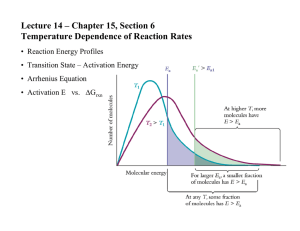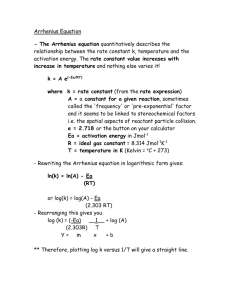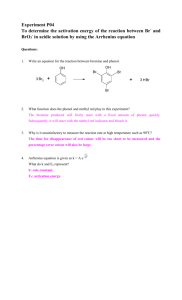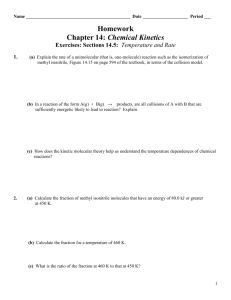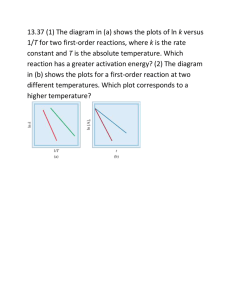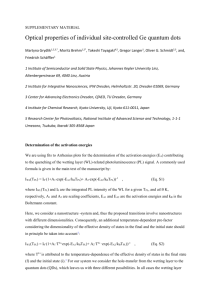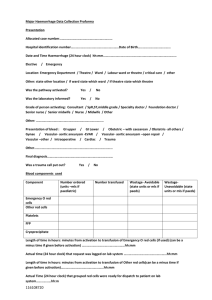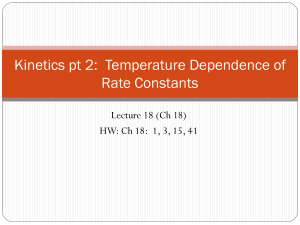Section 14.5 - SUNY Oneonta
advertisement
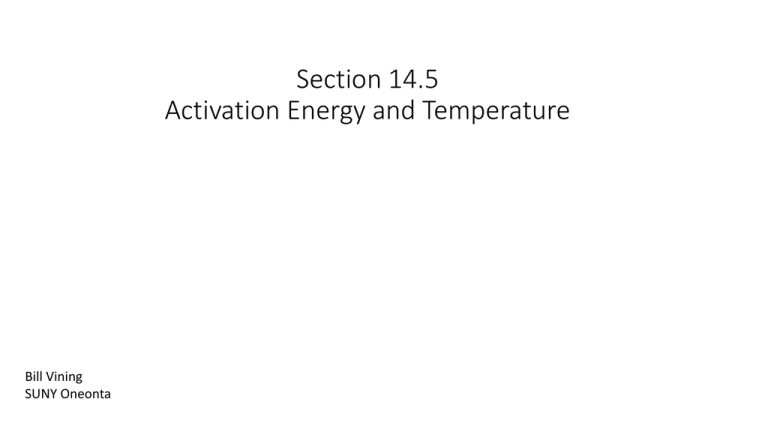
Section 14.5 Activation Energy and Temperature Bill Vining SUNY Oneonta Activation Energy and Temperature In this section… a. Reaction coordinate diagrams b. The Arrhenius equation c. Temperature, Ea and k d. Graphical determination of Ea Reaction Coordinate Diagrams Numerical connection between Ea and ΔE Activation Energy, Temperature and Rate Activation Energy, Temperature and Rate Trends: • As Ea decreases, rate increases • As T increases, rate increases Why do reactions go faster at higher temperature? Why do reactions go faster with lower activation energy? The Arrhenius Equation Trends: k = rate constant A = frequency factor Ea = activation energy R = gas constant (8.3145 J/K ∙mol) T = temperature (K) As T↑: As Ea↑: The Arrhenius Equation: Two Point Version General Use: k1 = rate constant at temperature 1 k2 = rate constant at temperature 2 T1 = temperature 1 (K) T2 = temperature 2 (K) Ea = activation energy R = gas constant (8.3145 J/K ∙mol) There are five variables. If you know 4 of Them you can solve for the 5th. The Arrhenius Equation: Two Point Version The activation energy for the gas phase decomposition of t-butyl propionate is 164 kJ. C2H5COOC(CH3)3(g) (CH3)2C=CH2(g) + C2H5COOH(g) The rate constant for this reaction is 3.80 × 10-4 s-1 at 528 K. What is the rate constant at 569 K? The Arrhenius Equation: Two Point Version The rate of a reaction triples when the temperature is increased from 280 oC to 300 oC. What is the activation energy? The Arrhenius Equation: Graphical Determination of Ea k = rate constant A = frequency factor Ea = activation energy R = gas constant (8.3145 J/K ∙mol) T = temperature (K) 𝐸𝑎 1 ln 𝑘 = ln 𝐴 − 𝑅 𝑇 y = b + m x Collect k vs. temperature data Plot ln(k) vs. 1/T Ea = - slope x R Graphical Determination of Ea 𝐸𝑎 1 ln 𝑘 = ln 𝐴 − 𝑅 𝑇
